|

ANTI-ADDICTION DAY
CULTURAL RESOURCES
Sunday, July 31, 2011
Demetrius K. Williams, Guest Cultural Resource Commentator
Pastor, Community Baptist Church of Greater Milwaukee; Associate Professor, department of French, Italian and Comparative Literature and Director of the Religious Studies Program, University of Wisconsin-Milwaukee
| | If you run across anybody that used to know me,
tell them I’m doing fine.
The last time that you saw me,
I was lifting up holy hands,
I’ll tell them I’ve been redeemed.
I’ve Been Redeemed. By Jessy Dixon
|
I. The History/Historical Documents
Anti-Addiction Day seeks to raise the consciousness of African American faith communities to the devastating dangers, risks, and consequences of addictive behavior and habits broadly defined. The term “addiction” has been defined in many ways. It has been defined as “the state of being enslaved to a habit or practice or to something that is psychologically or physically habit-forming, as narcotics, to such an extent that its cessation causes severe trauma. Addiction is a physical or mental dependence on a behavior or substance that a person feels powerless to stop.”1 Another rendering is “an uncontrollable compulsion to repeat a behavior regardless of its negative consequences.”2 Finally, addiction designates “a process whereby a behavior, that can function both to produce pleasure and to provide escape from internal discomfort, is employed in a pattern characterized by (1) recurrent failure to control the behavior (powerlessness) and (2) continuation of the behavior despite significant negative consequences (unmanageability).”3
Many of us who live in African American communities need little convincing that drug addiction and other “dependencies” are nearly pandemic in many African American communities. The plague of addiction in various forms is comparable for some in the faith community to idolatry in the Old Testament. Why idolatry? Perhaps, this analogy is adequate because in the life of the people of Israel, idolatry was the one communal “attraction,” “lure,” or “temptation” that caused the people to disassociate from their hard-won cultural and social values and also from their essential familial and religious commitments. The scriptural lection, James 1:13-16, speaks in terms of “temptation,” “desire,” and “enticement.” These terms are generally used and thought of in terms of the individual. However, in order to address the broad array of addictions and dependencies in African American communities, the scope of these terms must be broadened to include social, communal, and group “temptations” and “enticements.”
It is imperative that the African American faith communities address the issue of addiction with social and cultural sensitivity to the historical and political forces and influences that have plagued and ravaged African American people as individuals and as a community. Also, while one cannot overlook the importance of individual responsibility in addiction and dependency, it is imperative that we also consider the social and political agendas that are served by keeping the African American community addicted and dependent. History has revealed the close relationship between addiction/dependency and control, not only of individuals but also of select group(s). For example, it is well documented that in Antebellum America slavemasters carefully monitored the slaves’ access to alcohol. While they were prohibited from drinking under normal circumstances, they were encouraged to drink heavily on Saturday nights and holidays. Why during these times? When there was no work schedule to occupy them, alcohol was used as a means of social control and social management of emotions. John W. Blassingame, in his classic work, The Slave Community: Plantation Life in the Antebellum South, is instructive in this matter regarding social control and individual responsibility: “Many slaves tried to drown their anger in the whiskey bottle, and if not drowned, the anger welling up overflowed into other often negative behaviors. Sometimes the slave projected his aggression onto his fellow slaves: he might beat up, stab, or kill one of his fellow sufferers.” Even more telling, Blassingame mentions that the ultimate fear is that the angry slave would take out his aggression on whites.4
Frederick Douglass, escaped slave, journalist, and noted spokesman for freedom, viewed such controlled promotion of drunkenness, even through such rituals as drinking contests, as a way to keep the slave in “a state of perpetual stupidity” and to “disgust the slave with his freedom.” He stated furthermore that, “These holidays serve as conductors, or safety valves, to carry off the rebellious spirit of enslaved humanity . . . this mode of treatment [promoting monitored drunkenness] is a part of the whole system of fraud and inhumanity of slavery.”5 Douglass noted in addition how the slave master’s promotion of drunkenness reduced the risk of slave rebellions: “When a slave was drunk, the slave holder had no fear that he would plan an insurrection; no fear that he would escape to the north. It was the sober, thinking slave who was dangerous, and needed the vigilance of his master to keep him a slave.”6
Douglass, therefore, challenged African Americans both slave and free to abstain from drinking as an act of personal emancipation and as preparation for becoming full citizens. Nineteenth-century African Americans generated their own temperance and mutual aid societies that framed a commitment to sobriety as a stairway to freedom, in accordance with Douglass’s example and admonition. Their pledge recommended in the Temperance Tract for Freedman read: “Being mercifully redeemed from human slavery, we do pledge ourselves never to be brought into slavery of the bottle, therefore we will not drink the drunkard’s drink: whiskey, gin, beer, nor rum, nor anything that makes drunk come.”7 To be sure, Douglass was well aware of the collusion between addiction/dependency and social control and how important recovery and abstention was for the communal and collective freedom of the African American community.
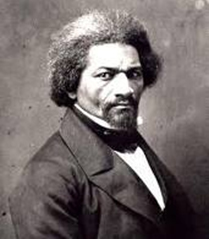 |
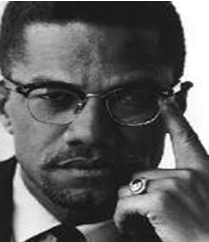 |
| Frederick Douglass |
Malcolm X |
|
The recognition of the intentional use and distribution of drugs and alcohol in African American communities for the purpose of social control was evident a century later to Malcolm X, who portrayed alcoholism and addiction as part of the continued machinery of African American oppression. Malcolm X recognized how intoxication had become part of the very fabric of Harlem and other African American communities: “. . . almost everyone in Harlem needed some kind of hustle to survive, and needed to stay high in some way to forget what they had to do to survive.”8 Like Douglass before him, Malcolm X understood that institutional interests were well served by addiction in the black community:
. . . [B]lack junkies are trying to narcotize themselves against being a black man in the white man’s America, but . . . the black man taking dope is only helping the white man to “prove” that the black man is nothing. . . . The white man wants black men to stay immoral, unclean, and ignorant. As long as we stay in these conditions we will keep on begging him and he will control us.9
It is important to note that while Malcolm X viewed addiction as an outgrowth of social-historical oppression, he passionately denounced African Americans who embraced their victimization as an excuse for continued self-and communal destruction. For him, the foundation of African American salvation could be found only in the resources inside their own souls and inside their own community. For him the social philosophy of Black Nationalism was the primary means to promote needed recovery and transformation. It also made it possible for African Americans to unite and remove “alcoholism, drug addiction, and other evils that are destroying the moral fiber of our community.”10
A concomitant crime that America committed was also teaching African Americans to hate themselves, and Malcolm X saw alcoholism and drug addiction as a direct manifestation of that self-hatred and self-loathing. Therefore, he perceived recovery as a spiritual and psychological transformation, as well as an economic and political liberation of African American people. For this reason, Malcolm X practiced and challenged other blacks to live a clean life, which entailed no alcohol, drugs, tobacco, gambling, or extra-marital sex, as daily acts of respect for self, family, and community.
Thus, like Douglass, Malcolm X saw addiction and dependency as aesthetics that numbed the pain of social and cultural oppression that dissipated the potential for political protest and economic self-determination. For both men, “sobriety” was more than an act of personal reformation; it was a political act of resistance: a refusal to engage in detrimental behavior that caused fracture and trauma to the self or the community. Non-addiction, then, was an act of both personal and cultural survival and healing. Like Douglass before him, Malcolm X was moved to act on behalf of the larger community of fellow sufferers; he challenged those who had been saved from addiction to return to the “junkie jungle” to salvage those who were still suffering.11
II. Personal Testimonies
We explored briefly above how the experiences and insights of Frederick Douglass and Malcolm X could teach us about the broader social, cultural, and political implications of addiction, dependency, and recovery within African American communities. However, what has not been emphasized is the importance of their own addiction and recovery histories. Many readers of this resource know something about the lives of these two men as great black leaders in the freedom struggles of two great epics, Anti-Slavery in the 19th century and Black Nationalism/Civil Rights movements in the 20th; but many are unaware of the addiction and recovery stories that are part of the formative life experiences of both Frederick Douglass and Malcolm X. Both men shared their addiction stories with the public, but the means of their recovery stories were somewhat discrete. This part of their lives is revealed, nonetheless, in their autobiographies, published speeches, and archived correspondence.
Frederick Douglass’s life offers a vivid testimony of how a single individual’s unwavering commitment to a promise and personal charisma and dedication to learning can transform his community and the world. That Douglass was addicted to alcohol is a fact about which he spoke publically and candidly. It was in a series of speeches that he gave in Scotland in 1846 where the stories of his early drinking excesses were presented for public consideration: “I used to love drink—That’s a fact. I found in me all those characteristics leading to drunkenness.”12 He states in another speech during the same Scotland journey,
I have had some experience with intemperance. . . . I knew once what it was like to drink with all the ardour of an old soaker [drunkard]. . . . Some of the slaves were not able to drink their share [portions of alcohol provided by the slave master], but I was able to drink my own and theirs too. I took it because it made me feel I was a great man.13
Douglass, moreover, told his Glasgow audience: “. . . it would be an interesting experience if I should tell you how I was cured of intemperance, but I will not go into that matter now.”14 It is unfortunate for posterity that he never revealed the details of his recovery processes in his writings or speeches. This would perhaps be of great value for future generations, however, it is known that he signed a temperance pledge in 1845 in the presence of Father Theobald Mathew, who was the leader of the Irish temperance movement. True to his pledge and promise, Douglass kept that pledge of sobriety for the remainder of his life, and went on to play a significant role in the “colored temperance movement.”15
In similar manner, Malcolm X, a century later, would discuss his pre-recovery life as a drug addict and drug dealer, pimp, and burglar, describing himself as “always high” on marijuana, cocaine, opium, and amphetamines. In 1946, Malcolm Little, called then, “Detroit Red,” was indistinguishable from other black addicted men entering prison for drug-related crimes. However, it was through his religious conversion in prison that he found a pathway to recovery and a new identity and life-purpose. That new identity and life-purpose propelled him onto the world stage where his self-education, wisdom, and brilliant eloquence served as a voice for the voiceless masses, articulating for them the raw realities of black life in his era. His defiant recovery from addiction and his unheralded outreach efforts, which he called “fishing for the dead,” brought to many addicted African Americans their sobriety and their dignity.16
The recovery achievements of these two great historic black leaders must be reclaimed and proclaimed on Anti-Addiction Day. The autobiographical testimonies of these two history-shaping figures are legacies that provide “Cultural Pathways to Recovery.” Their lives provide lessons about addiction and recovery that professionals and non-professionals, religious and non-religious persons can draw from in order to aid those in recovery and instruct those who treat them.
III. The Cultural Pathways to Recovery Model
Two authors have explored with audiences across America the “Cultural Pathway to Recovery” model and offer the following reflections (which I have summarized).17
Historical Trauma, Liberation, and Cultural Healing: Addiction in African American communities should be viewed within the larger historical context of slavery and oppression. The historical traumas of oppression destroy personal identity and hope, erode cultural sources of resilience, and fuel the appetite for anesthesia. Conversely, recovery is best framed within the larger framework of liberation and personal/cultural survival.
Catalytic Metaphors: To achieve recovery, addicted individuals must find sense-making, life-transforming ideas that abort the rituals of drug use. Such metaphors can spark profound breakthroughs in perception of self and the world that in turn lead to dramatic reconstructions of personal identity and interpersonal relationships. Thus linking addiction and dependency to historical oppression, portraying alcohol and drug use as components of continued oppression, and portraying sobriety and recovery as acts of resistance and liberation can serve as a transformative experience for some African Americans in recovery.
Strength, Meaning, and Purpose: African Americans in recovery can draw strength, meaning, and purpose from their own individual and collective survival. Questions such as the following can help elicit that experience of meaning and purpose: 1) How were you able to survive to reach this day when so many did not? 2) What is the purpose for which you were spared? 3) What has your life course prepared you to do? 4) What personal/cultural debts need repayment? 5) What special lessons and gifts would you like to share with others? 6) What does your family and community need from you right now? Such strengths-based approaches are well suited for African American clients, particularly when they focus beyond the individual to tap sources of resilience within the family and kinship network, the community, and the larger culture.
This important reality can be seen in the recoveries of Frederick Douglass and Malcolm X, which were rooted in commitments that transcended their own self-redemptions. Challenging the notion that “you can only get sober for yourself,” their allegiance to a higher calling—liberating African Americans as a people—guided their recovery and sustained them in the face of temptations, challenges to their characters, and death threats.
Recovery Heroes: There is a critical need for culturally viable models of addiction recovery. The African American community has been denied such role models by media machinery that vividly portrays the stories of African American addiction while withholding the stories of African American recovery. However, visible recovery stories are emerging across ethnic cultures, and these stories need to be placed in the hands of recovering people so that they can be encouraged by those with whom they can identify.
Recovery and History: Frederick Douglass and Malcolm X made significant historical contributions because of the depth of meaning and purpose they discovered within their recovery processes. This emerging field needs a definitive history of recovery among African Americans. Such a history will require considerable research, as these stories exist only as fading whispers within the oral histories of African American communities.
Connection to Community: A common thread within the recovery stories of Malcolm X and Frederick Douglass is the reciprocal relationship each experienced with their larger community. Their recoveries drew assistance from African American communities just as their recoveries served those communities. The African proverb “I am because we are and we are because I am” suggests that exploring the relationship between recovery and community is vital.
The Power of Service: Recovery and community service in the lives of Frederick Douglass and Malcolm X are not simply interesting historical artifacts. Recovery is an enduring but hidden reality within African American communities. African American men and women in recovery live quiet lives of sobriety and productivity in communities across America. It is time to ask a vanguard of such individuals to step forward as living proof of the liberating, transforming power of recovery in the African American community. Both Douglass and Malcolm X subsumed their personal recovery within a larger call to the public service of liberation. This means that recovering people can constitute a healing force within African American communities that has yet to be fully mobilized. It is time that a collective call to service was issued.
The Healing Power of Faith: Both Frederick Douglass and Malcolm X drew strength from religious institutions within their communities and framed their sobriety within a larger Africentric moral code. Such resources continue to exist today in the form of vibrant, faith-based recovery ministries. Such resources should be viewed as essential partners in recovery support work within African American churches and other institutions. Religion and spirituality can be of significant value in recovery and healing.
IV. Stories and Illustrations
In this cultural resource unit I have attempted to stress the importance of viewing addiction and dependency in African American communities within the larger scope of the legacy of oppression. Here, I want to push the notion of dependency and addiction further, particularly in terms of addiction and dependency defined above as “a process whereby a behavior, that can function both to produce pleasure and to provide escape from internal discomfort.” [My emphasis] I want to push this notion to include “religion.” It is well documented that religion can also play a pacifying and escapist role in the lives of people. To be sure, I will never forget a conversation that I had with a seminary professor some time ago on the way from a fall convocation. In discussing the emergent gang violence in Boston (particularly in Rochester and Dorchester, predominantly African American neighborhoods) and the poor state of public education in the inner city, he asked: “Why is it that minorities do not rise up and stand up for better treatment?” In a similar manner, I had a breakfast meeting with two female members of the church I pastor last year who were concerned about the state of our community here in Milwaukee. They wanted to know my stance of community involvement and how I could “get black people to work in their own self-interest and not to their detriment.” The final piece, of more recent vintage, is the peaceful but persistent protests in Madison and Milwaukee in response to the radical “Repair Bill” of the newly installed Governor of Wisconsin. This bill, if passed, will devastate inner city education for poor and minority residents, of which 80% are African Americans. Most of the protesters are non-black, yet blacks will be most affected by the radical sweeping changes. When attempting to rally and garner support within the churches, some people cautioned me to be careful about worrying too much about politics, “God’s got it all in his hands,” they said.
When I consider the three vignettes mentioned above, I cannot help but think about Karl Marx, one of the framers of Marxist philosophy and author of the Communist Manifesto, who infamously remarked that “religion is the opium of the people.” He recognized how religion could be used like a drug to pacify and provide escape for oppressed peoples, which in turn provided ruling regimes with little fear of their resistance. The definition of addictive behavior is instructive in this regard because an addiction “can function both to produce pleasure and to provide escape from internal discomfort” and “is employed in a pattern characterized by (1) recurrent failure to control the behavior (powerlessness) and (2) continuation of the behavior despite significant negative consequences (unmanageability).” We must be wary indeed of excluding the possibility of religion itself as an addictive substance that can cause the African American community to engage in behaviors that are not in its best interest and find comfort in the “dope” that religion can supply to hurting people.
As a matter of fact, Obery Hendricks, an African American scholar, castigated most of what could be called “Contemporary Gospel,” based apparently on a comment made by Kirk Franklin in an interview published in Vibe Magazine.18 In this interview Franklin said, “People need to get high off something spiritual, and I’m the holy dope dealer. I got this drug; I got this Jesus rock. And you can have a type of high that you’ve never experienced.”19 [Emphasis mine.] According to Dwight Webster, “though Hendricks complains about the youthful statement coming from this current time or decade, he has missed the same kind of statement made form an earlier time.”20 Anthony Heilbut reported a sentiment expressed by Willie Mae Ford Smith, who sang during what is sometimes termed “the golden age of Gospel music”:
What I’ve got is better than liquor, it’s better than a shot. Cause (sic) when the world’s through, they’ve got a hangover. But when I’m done, I’ve got ‘Precious Memories.21
To be sure, this writer does not doubt the power of religion to supplant substance abuse and addiction: he simply bemoans the possibility that religion itself can be used as an addictive substance that hinders the struggle for the wholeness of the African American community. As with Frederick Douglass and Malcolm X, we must see religion as a part of the recovery process that inspires us to service and acts of sacrifice that challenges all foes, be they drugs and alcohol or unjust policies and practices. This means that in 2011 and in the future, churches must either host or collaborate with others in recovery programs. It is no longer acceptable for the church to just preach about the addictions that plague our community. It is time for action.
V. Songs That Speak to the Moment
In keeping with the emphasis that addiction can best be considered as both an individual and communal experience and challenge, this song evokes the reality that we are all tied together as Martin Luther King Jr. stated, “in a single garment of destiny.” We need one another to truly survive.
I Need You to Survive
I need you, you need me.
We’re all a part of God’s body.
Stand with me, agree with me.
We’re all a part of God’s body.
It is his will, that every need be supplied.
You are important to me, I need you to survive.
You are important to me, I need you to survive.
(repeat 3X)
I pray for you, You pray for me.
I love you, I need you to survive.
I won’t harm you with words from my mouth.
I love you, I need you to survive.
(repeat 8 X)
It is his will, that every need be supplied.
You are important to me, I need you to survive.22
Religion and spirituality can play an essential role in the recovery of individuals in our communities. The following song is essential because if speaks of the time before and the time after one has met Jesus and how this encounter is transformative. Of especial note is verse 4, which can be important in attesting that a change has occurred: “If you run across anybody that used to know me, tell them I’m doing fine. The last time that you saw me, I was lifting up holy hands, I’ll tell them I’ve been redeemed.”
I Am Redeemed
Chorus
I am redeemed, bought with a price,
Jesus has changed my whole life.
If anybody asks you, just who I am,
tell them I am redeemed.
Verse 1
Where there is hate, love now abides,
where there was confusion, peace now reigns.
I’m a child, child of the King,
it’s all because I am redeemed.
Chorus
Verse 2
I’ll tell of His favor, I’ll tell of His love,
I’ll tell of His goodness to me.
He purchased my redemption with His own precious blood,
and from sin I’ve been set free.
Chorus
Verse 3
There’s no shackles on me, I’m as free as I can be;
because Jesus changed my life.
He died up on the cross,
that’s why I can tell the world that I am redeemed.
Chorus
Verse 4
If you run across anybody that used to know me,
tell them I’m doing fine.
The last time that you saw me,
I was lifting up holy hands,
I’ll tell them I’ve been redeemed.23
Chorus
The following song, “Order My Steps,” is more personal and pleading. In the process of recovery one needs the assurance that one is walking a path that leads to success and that on this journey God is with them.
Order My Steps
Chorus 1:
Order my steps in Your word dear Lord,
lead me, guide me every day,
send Your anointing, Father I pray;
order my steps in Your word,
please, order my steps in Your word.
Verse 1:
Humbly, I ask Thee to teach me Your will,
while You are working, help me be still,
Satan is busy, but my God is real;
order my steps in Your word,
please, order my steps in Your word.
Verse 2:
Bridle my tongue let my words edify,
let the words of my mouth be acceptable in Thy sight,
take charge of my thoughts both day and night;
please order my steps in Your word,
please order my steps in Your word.
Bridge:
I want to walk worthy,
my calling to fulfill.
Please order my steps Lord,
and I’ll do Your blessed will.
The world is ever changing,
but You are still the same;
if You order my steps, I’ll praise Your name.
Vamp:
Order my steps in Your word.
Order my tongue in Your word.
Guide my feet in Your word.
Wash my heart in Your word.
Show me how to walk in Your word.
Show me how to talk in Your word.
When I need a brand new song to sing,
show me how to let Your praises ring,
in your word (2x),
Chorus 2:
Please order my steps in Your word,
please order my steps in Your word.
Ending:
Please order my step in Your word.
Please order my tongue in Your word.
Please guide my feet in Your word.
Please wash my heart in Your word.
Please order my steps in Your word.24
VI. Events or Practices That Create a Memorable Learning Moment
1. Have youth review the lyrics of popular songs that either valorize or caution the use of drugs and alcohol as a tool to facilitate discussion and moral ethical examples of how addiction and dependency can harm not only the individual but also the family and the larger community. An important article for this exercise is Tanya Sanders, Mark Sanders, and Williams L. White’s “When I Get Low, I Get High: The Portrayal of Addiction and Recovery in African American Music,” in Counselor, The Magazine for Addiction Professionals.25
2. View and discuss movies that deal with African American figures and their struggles with addiction and recovery; for example, Richard Pryor’s “Jo Jo Walker, Your Life is Calling” or “Ray” (Ray Charles) or “Lady Sings the Blues” (Billie Holliday). In addition, movies like “New Jack City” and “Menace 2 Society” can be instructive for initiating conversation with audiences nurtured in the hip hop era.
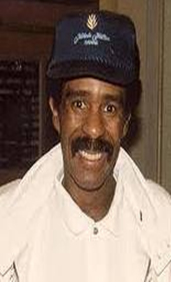 |
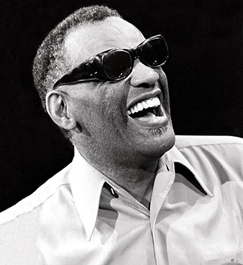 |
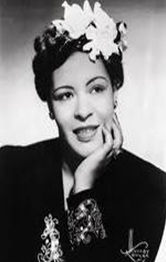 |
| Richard Pryor |
Ray Charles |
Billie Holliday |
3. Use the autobiographical information of notable African American figures both in the past (like Frederick Douglass and Malcolm X) and in the present (like Natalie Cole, Samuel L. Jackson, or gospel singer Helen Baylor) to provide examples and models of addiction, abuse, and especially recovery.
 |
 |
 |
| Natalie Cole |
Samuel L. Jackson |
Helen Baylor |
VII. Substance Abuse Resources
If your church is interested in developing a substance abuse ministry, the following national and community organizations may assist with your project:
Books
- Brown, Diane R., Wilma Scott, Krim Lacey, and Joan Blount. Black Churches in Substance Use and Abuse Prevention Efforts.
- Perkinson, Robert R. Chemical Dependency Counseling: A Practical Guide.
- Rosenthal, Howard G. Favorite Counseling and Therapy Techniques: 51 Therapists Share Their Most Creative Strategies.
- Velasquez, Mary, Gaylyn Gaddy Maurer, Cathy Crouch, and Carlo C. DiClemente. Group Treatment for Substance Abuse: A Stages of Change Therapy Manual.
- Miller, J. Keith. A Hunger for Healing: The Twelve Steps as a Classical Model for Christian Spiritual Growth.
- Miller, Geri. Learning the Language of Addictions Counseling.
- Queen, Edward. Serving Those in Need: A Handbook for Managing Faith-Based Human Service Organizations.
- Stevens, Patricia. Substance Abuse Counseling: Theory and Practice.
NOTES
1. “Addiction,” http://dictionary.reference.com/browse/addiction accessed 28 February 2011
2. Ibid.
3. “Addiction,” http://www.ncbi.nlm.nih.gov/pubmed/2285834 accessed 28 February 2011
4. Blassingame, John W. The Slave Community: Plantation Life in the Antebellum South.New York, NY: Oxford University Press, 1979, p. 315.
5. Douglass, Frederick. “Intemperance Viewed in Connection with Slavery: An Address Delivered in Glasgow, Scotland, on 18 February 1846,” in John W. Blassingame and John R. McKivigan, eds., The Frederick Douglass Papers (Series One: Speeches, Debates, and Interviews. New Haven, CT: Yale University Press, 1979–1992, vol. 1, pp. 166–67.
6. Ibid.
7. Cheagle, R. “The Colored Temperance Movement.” Unpublished thesis; Washington, DC: Howard University, 1969.
8. Malcolm X. The Autobiography of Malcolm X as Told to Alex Haley. New York, NY: Grove Press, 1964.
9. Ibid.
10. Malcolm X. “The Ballot or the Bullet speech,” April 4, 1964, in Malcolm X Speaks: Selected Speeches and Statements. New York, NY: Grove Press, 1965, pp. 23–44.
11. Malcolm X. The Autobiography of Malcolm X.
12. Douglass, Frederick. “Intemperance Viewed in Connection with Slavery: An Address Delivered in Glasgow, Scotland, on 18 February 1846,” The Frederick Douglass Papers, pp. 166–67.
13. Douglas, Frederick. “Temperance and anti-slavery: An address delivered in Paisley, Scotland, on 30 March 1846,” The Frederick Douglass Papers, pp. 207–208.
14. Ibid.
15. Cheagle, R. “The Colored Temperance Movement.”
16. Malcolm X. The Autobiography of Malcolm X.
17. “Addiction in the African American Community: The Recovery Legacies of Frederick Douglass and Malcolm X.” in Counselor: The Magazine for Addiction Professionals, October 2006, v. 7, n. 5, pp.5 3–58. This article was an essential source for bearing out my contention that addiction and dependency should be viewed in the larger context of the legacy of oppression. I have borrowed heartily from this article in this cultural resource. However, no author was indicated but I accessed the article under the following URL on 2 February 2011:
http://www.counselormagazine.com/component/content/article/57-minorities/553-addiction -in-the-african-american-community-the-recovery-legacies-of- frederick-douglas-a-malcolm-x
18. Hendricks, Obery M., Jr. “ ‘I Am the Holy Dope Dealer’: The Problem with Gospel Music Today,” in The Journal of the Interdenominational Theological Center, Vol. XXVII, Nos. 1 and 2 (Fall 1999/Spring 2000), 12, 13.
19. Kirk Franklin’s quote is from an interview with Alan Light in “Say Amen, Somebody,” Vibe 6 (October 1997): 92; quoted in Obery M. Hendricks Jr., “ ‘I Am the Holy Dope Dealer’: The Problem with Gospel Music Today,” in The Journal of the Interdenominational Theological Center, Vol. XXVII, Nos. 1 and 2 (Fall 1999/Spring 2000): 7.
20. It was Dwight Webster, “Gospel Music in America 1960–1980: A Critical Investigation of the Themes of ‘Survival,’ ‘Elevation,’ and ‘Liberation’” (Unpublished thesis: UC Berkley, GTU, 2011), who alerted me to Kirk Franklin’s quote, “I am the holy dope dealer” and Hendricks’s rebut.
21. Heilbut, Anthony. The Gospel Sound: Good News and Bad Times, the 25thAnniversary Edition. New York, NY: Limelight Editions, 1997, pp. 298–299.
22. Hezekiah Walker and the Love Fellowship Choir. “I Need You to Survive.” Family Affair II. New York, NY: Verity Records, Zomba Recording LLC, 2002.
23. Jessy Dixon and the Chicago Community Choir. “I Am Redeemed.” We Give You Praise. Oshawa, Ontario, Canada: Ambassador Records, 2006.
24. Burleigh, Glenn. “Order My Steps.” It’s Our Time: GMWA Women of Worship. Indianapolis, IN: Tyscot Records, 2000.
25. Sanders, Tanya, Mark Sanders, and Williams L. White’s “When I Get Low, I Get High: The Portrayal of Addiction and Recovery in African American Music,” in Counselor, The Magazine for Addiction Professionals, December (2006), v. 7, pp. 30–35.
|